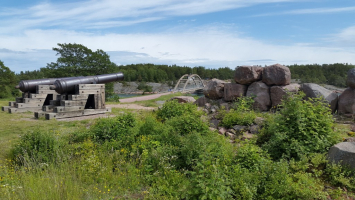Top 10 Most Beautiful Historical Sites in Finland
Finland has a diverse collection of Historic Sites, ranging from medieval castles to industrial landscapes. These historic landmarks in Finland, along with its ... read more...museums, are an excellent opportunity to learn about the history of a country that was dominated by both the Swedish and the Russians until attaining independence in 1917. Today, let's follow Toplist to discover the most beautiful historical sites in Finland.
-
Suomenlinna Fortress is a magnificent 18th-century coastal fortress structure extending across eight islands in Helsinki that has been owned by the Swedish, Russians, and Finnish governments. Suomenlinna Fortress, a UNESCO World Heritage Site and one of Top 10 Tourist Attractions, one of the most beautiful historical sites in Finland, is regarded as an exceptional example of the period's military architecture.
Suomenlinna Fortress was built by the Swedish in 1748, when Finland was an eastern Swedish possession, and was regarded crucial in terms of defense, especially with Sweden's falling authority and rising Russian imperialism. Suomenlinna Fortress, which was given the name Sveaborg in 1750, was also known as 'Viapori' (the Finnish equivalent) until 1918.
After avoiding military participation in the 18th century, the Russo-Finnish War, commonly known as the 'War of Finland,' saw Suomenlinna Fortress become the target of an ongoing Russian attack in the 19th century (1808-1809). Suomenlinna Fortress surrendered to the Russians after a three-month siege.
The Russians went on to expand and garrison Suomenlinna Fortress, although most of it fell into ruin over time. Renovations were carried out as the Crimean War (1853–1856) drew nearer, but Suomenlinna Fortress was severely damaged during a two-day Anglo-French bombardment during the fight, but it remained in Russian control.
The Viapori uprising, a short-lived military mutiny, took place in 1906 at Suomenlinna Fortress. The stronghold then guarded St Petersburg as part of the Peter the Great Fortress during World War One. Finland declared independence from Russia before the war ended on December 6, 1917.
Today, it is a fascinating and popular tourist destination, with a variety of attractions such as museums and historic monuments like as the King's Gate and the Great Courtyard. Military history buffs will appreciate examining the several bastions, and guided tours are available.
Location: Helsinki, Finland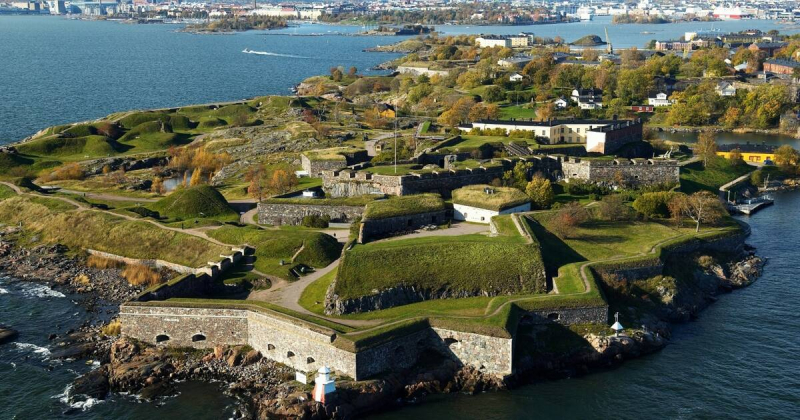
Photo: whc.unesco.org 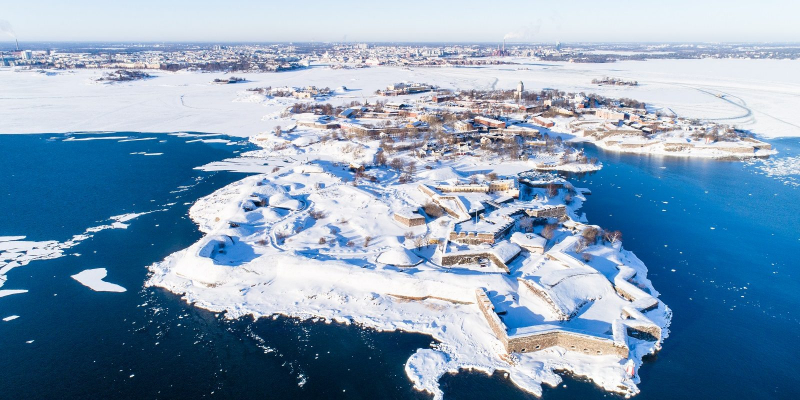
Photo: suomenlinna -
Turku Castle (Turun Linna) is a massive medieval castle in Turku, Finland, that has served as a fortification, a granary, and a prison in the past. In fact, it is claimed to be Finland's largest and best-preserved medieval structure.
Turku Castle was built around 1280, when Finland, then known as Eastland, was still a part of Sweden. The castle served as a center of administration as well as a means of defense for the area.
Over the ages, Turku Castle would be enlarged and strengthened, until reaching a recognizable condition in the 16th century under Gustav Vasa and his son. Though it has been repaired multiple times since then, the structure is still remarkably similar to how it was when it was first built.
Turku Castle was frequently involved in local or regional battles in terms of military action. When it was assaulted by Russian invaders in 1318, it took on a larger international importance. Turku Castle's military importance diminished over time, and it became a prison in the 18th and 19th centuries before becoming a museum of its own and the Turku region's history, a role it continues to serve today.
Turku Castle is now Finland's most visited museum, with an annual attendance of over 200,000 people. Many of the larger rooms are also used for government occasions.
The interesting Sture Church and Nun's Chapel has a collection of medieval wooden religious figures, as well as the King's State Room, the King's and Queen's Halls, and exhibition rooms on the attic floor showcasing highlights from the Museum Centre's collections.
The Bailey's permanent display focuses on the castle's shifting functions as a defensive fortification, a staging point for tax and trade goods, a barracks, and a museum, as well as ordinary life in the castle, its festivals, court, and employees.
Location: Turku, Finland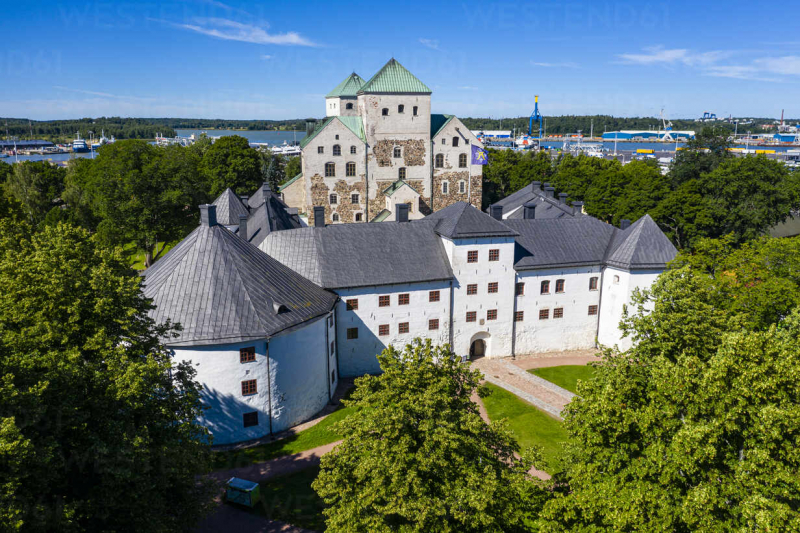
Photo: westend61 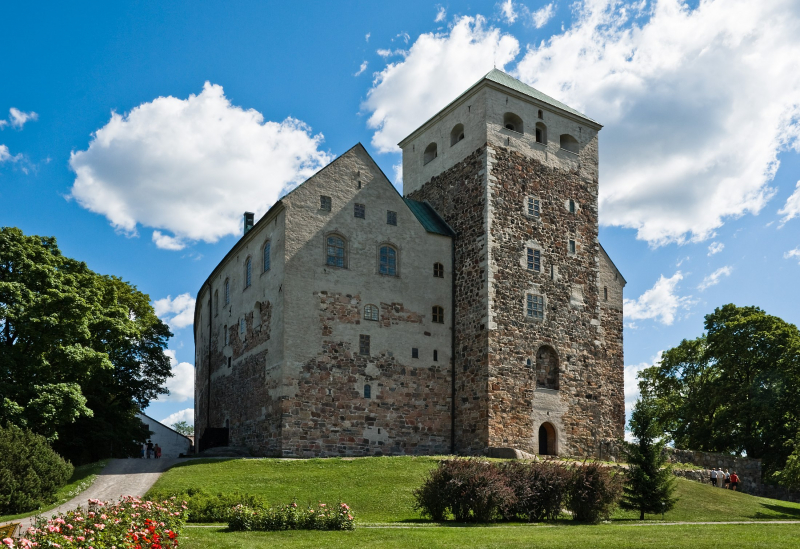
Photo: travelazzi -
Hame Castle (Hämeenlinna) is a medieval site in Hämeenlinna, Finland, between Helsinki and Tampere. It has served as a royal house, a granary, and a prison.
While the exact period of construction of Hame Castle is unknown, it is generally dated to the late 13th century. Many historians link it to Earl Birger's Swedish crusade, who landed here somewhere during that century, considering the fortress as a way to help Sweden consolidate dominance in central Finland. Hame Castle would be under development for centuries, regardless of when it was founded.
Hame Castle's brick parts date from the 14th century. The use of brick makes the site distinctive in that it was one of the first places in Finland to do so. The increasing splendor of the building materials over the years reflects Hame Castle's overall prominence. It was indeed linked to many of Finland's most significant circles from the 14th through the 16th centuries.
The collapse of Hame Castle began in the late 16th century, aided in part by King Gustav I of Sweden's reformations. After the Great Northern War, it experienced a brief recovery, but its main functions in the 19th and 20th centuries were as a granary and prison.
The castle is now a famous tourist destination for both tourists and locals. The fortified camp, which is the oldest component of Hame Castle, is still open to visitors. This consists mostly of an imposing, massive defense wall with numerous towers. A ruin of an old well can also be found.
In the summer, guided tours begin at 10 a.m. and last all day, which is highly recommended because the majority of the signage throughout the castle is in Finnish and Swedish.
Location: Hämeenlinna, Finland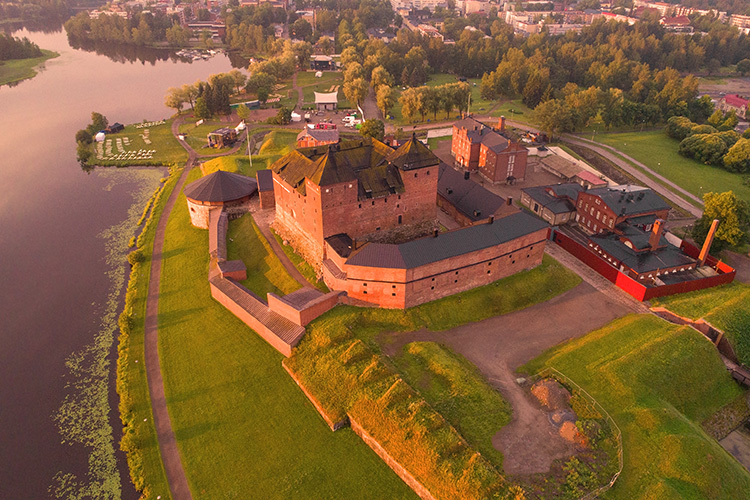
Photo: historyhit 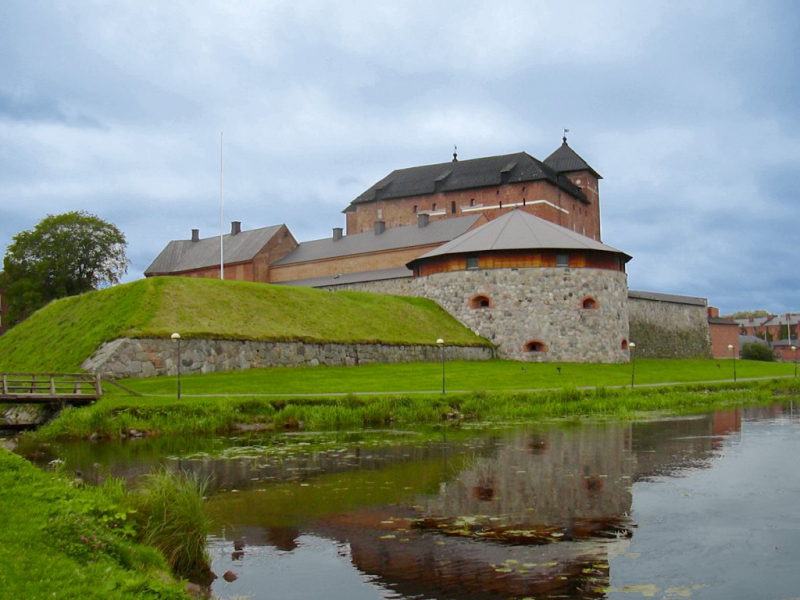
Photo: wikipedia -
Kastelholm Fortress, often spelled Kastelholms Slott or Kastelholman Linna, is a medieval castle on the Swedish island of Gotland. Built on a cool space, fresh air, this castle is classified as one of the most beautiful historical sites in Finland.
Kastelholm Castle was built in the 1380s as a military and administrative center for the region, which was then part of the Swedish Empire. Over the next two hundred years, successive Swedish and Danish rulers continued to preserve and enhance Kastelholm Castle, and the castle was briefly home to Swedish King Gustav I before he became monarch.
The fortress, which was built on a small island surrounded by moats filled with water and planted with many rows of poles, has played a key role in establishing Swedish dominance over the Baltic over the years.
Kastelholm Castle's power began to fade in the late 16th and early 17th century. After being damaged by Charles IX's (aka Karl IX's) armies in 1599, Kastelholm Castle lost its status as the region's administrative seat, and a fire destroyed the castle in 1745.
The site was turned into a museum in the early twentieth century, and there was a restoration program in the 1980s. Today, visitors can see the ruins of Kastelholm Castle, as well as the Jan Karlsgrden Open-Air Museum, which recreates 19th-century life in the region. Kastelholm is also one of favorite tourist destinations in Finland.
Location: Åland, Finland.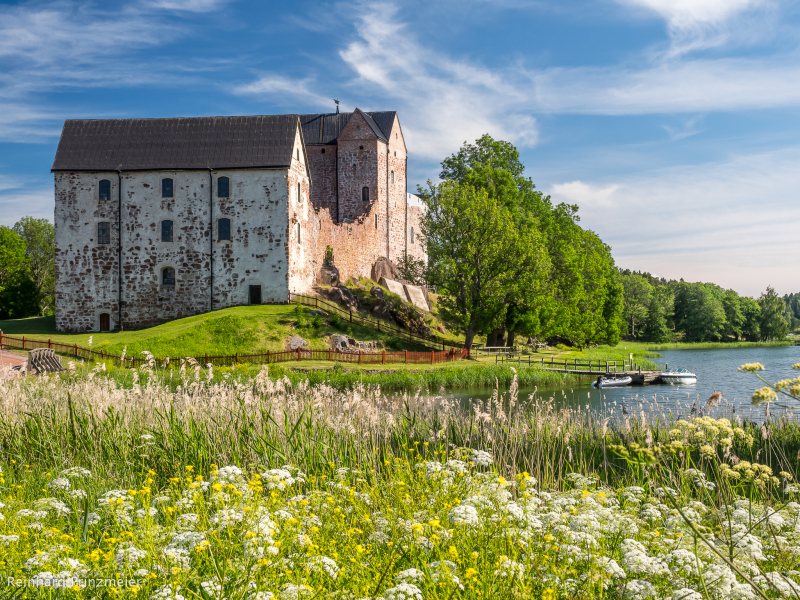
Photo: locationscout 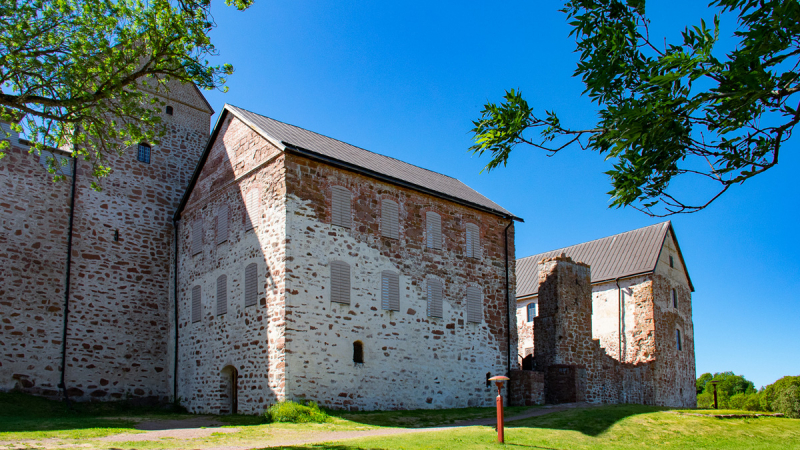
Photo: discoveringfinland -
The ruined 19th-century stronghold of Bomarsund (Bomarsunds fastningsruiner) in Aland, Finland, was destroyed during the Crimean War. The fortress remains are now a popular and scenic visitor destination, as well as one of the land's most spectacular historical sites. In 1856, the entire region was proclaimed a demilitarized zone, which it still is today.
Bomarsund Fortress was built for Russian contingents on the island between 1832 and 1854, while Aland was still a Russian possession. The fortress was designed to accommodate thousands of soldiers as well as serve as a defensive building. Indeed, a town-like hamlet known as 'Skarpans' sprang up around the stronghold, occupied by both military and civilian populations.
Bomarsund Fortress was supposed to contain fourteen turrets, but only three were built before it was destroyed by the allied English-Frenchmen. This happened during the Crimean War's Battle of Bomarsund in 1854, when allied British and French forces took Bomarsund Fortress from the Russians after a week. This wreaked havoc on the fortress and culminated in the deportation of over 2000 soldiers to England and France as prisoners of war.
Bomarsund is now a historical monument with an area of around 870 hectares. Visitors can tour the magnificent and historic site of Bomarsund Fortress, which was never rebuilt and hence serves as a testament to the high hopes that were once had for the area before the its destruction.
Location: Åland, Finland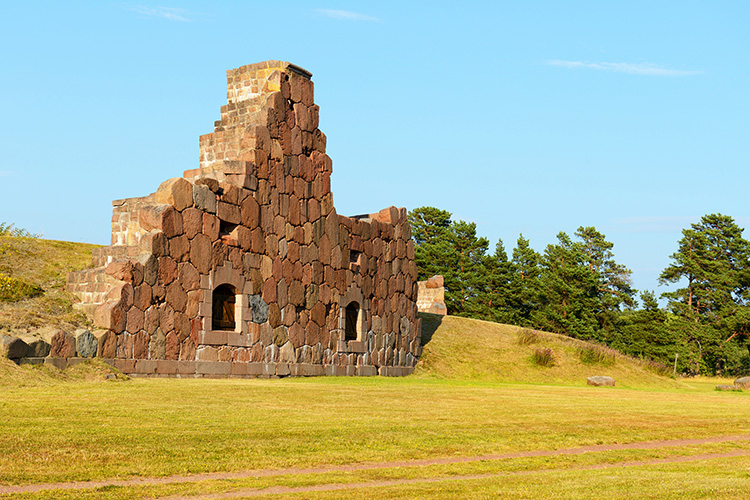
Photo: historyhit 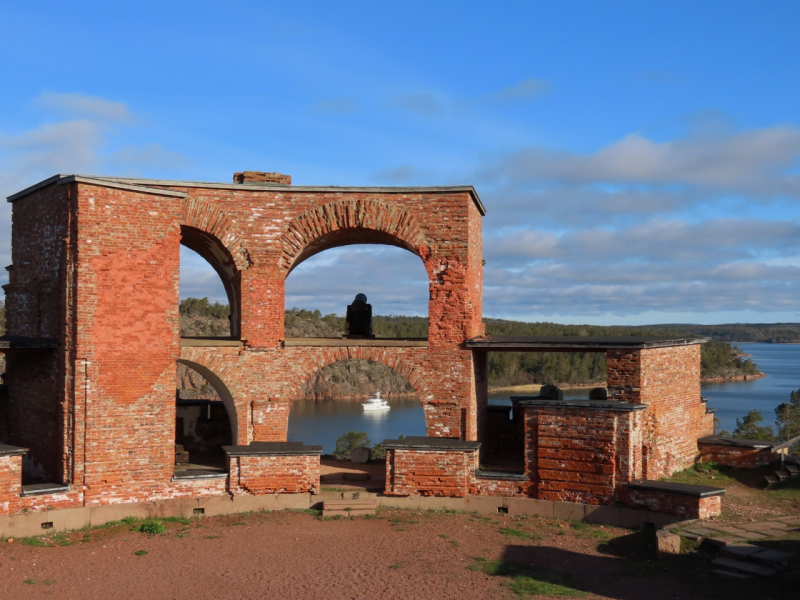
Photo: mvdirona -
Raseborg Fortress (Raseporin Linna) is a destroyed medieval castle in southern Finland that was first written about in 1378. Raseborg Castle is thought to have been erected around 1370 by Bo Joninpoika Grip, the royal council leader of Magnus IV of Sweden. Its building is estimated to have lasted until the 16th century.
Raseborg Castle was built to defend the Swedish holdings of Southern Finland at the time. Built as the administrative capital of Western Uusimaa to keep an eye on ships and trade in the Gulf of Finland, it would later become a flashpoint for battles with the Danes and pirates.
Raseborg Castle would have surrounded the sea at the time of its construction, but falling sea levels have forced it landlocked, and it now sits dramatically above a group of rocks. This growing distance from the sea, together with the foundation of Helsinki in 1550, is said to have contributed to Raseborg Castle's eventual abandonment in 1558.
The castle sat derelict for more than 300 years before being restored in the 1880s. Visitors to Raseborg Castle can witness the repaired outer wall as well as other remnants, including the ruins of a wooden barrier that originally encircled the castle and prevented foreign ships from entering the harbor. There are also guided tours offered.
Location: Snappertuna, Finland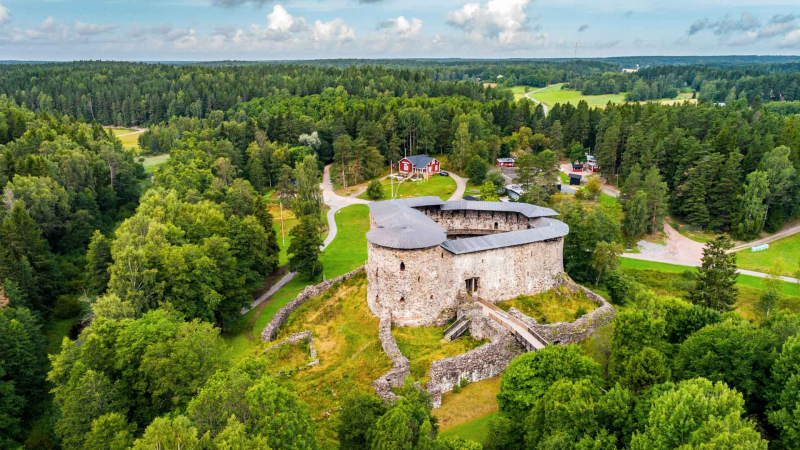
Photo: visitraseborg 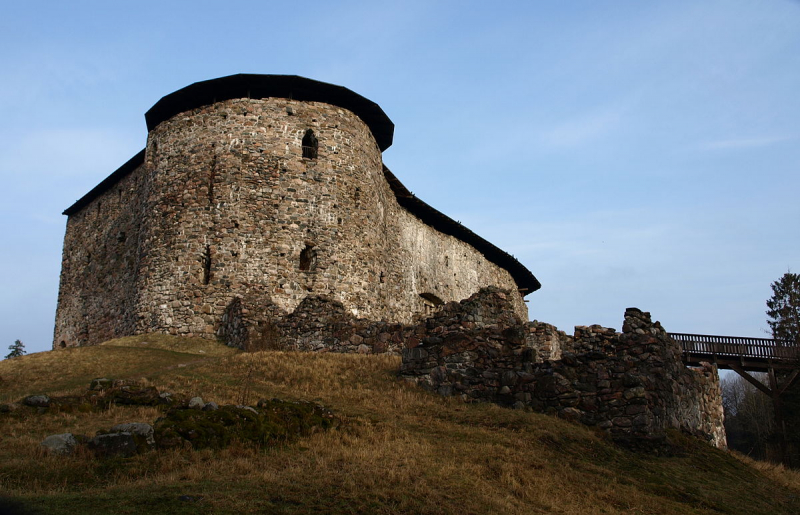
Photo: wikidata -
The Verla Groundwood and Board Mill is a fine example of the 19th-century industrial environment of Finland's Kymi river valley. Indeed, the site has been a UNESCO World Heritage Site since 1996, a witness to its exceptional level of preservation, rarity, and historical significance, earning it a place in the top ten Finnish tourist attractions.
While the first ground wood mill in Verla was built in 1872, the current Verla Groundwood and Board Mill was built in 1882 after the previous one was destroyed by fire. This mill, which was founded by Gottlieb Kreidl and Louis Haenel, lasted until 18 July 1964, when it was closed due to the death of its long-time owner.
Later, the historical paper mill would be converted into a museum of board mill technology, with the machines preserved for the public to explore.
The Verla Groundwood and Board Mill is open every day from 10 a.m. to 6 p.m., and visitors may learn about its history and how it affects the surrounding area. The process of cutting timber and manufacturing pulp is followed on a guided tour of the mill, which includes drying, sorting, and packing paper. These trips are available in Finnish, Swedish, English, German, and Russian, and must be scheduled ahead of time.
A group of magnificent prehistoric rock paintings beside the car park, which are thought to date back to 7000 BC, is located separately but on the same site. You can also stroll through the woods just over the water on the lovely Verla Forest Trail Fiskars Village
Location: Kouvola, Finland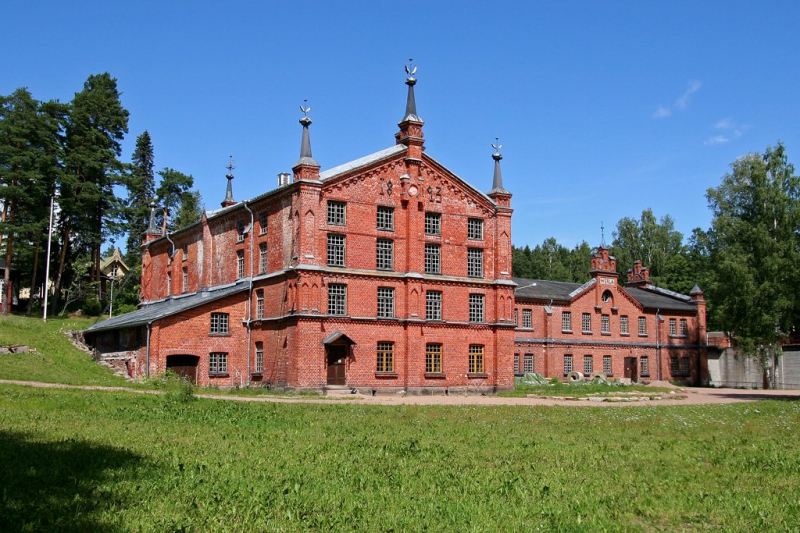
Photo: twitter 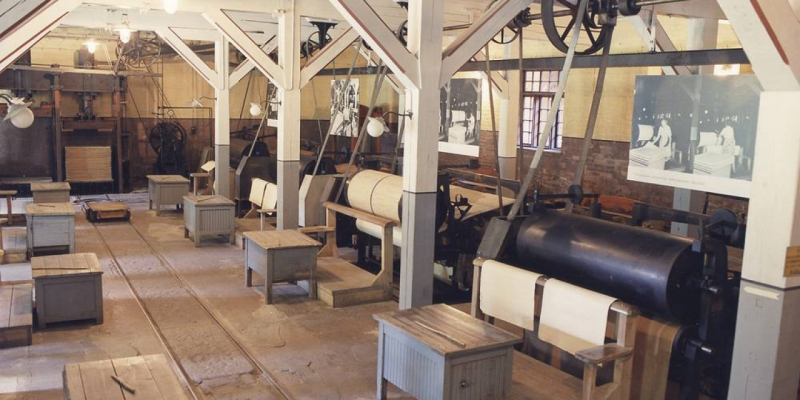
Photo: visitnordic -
Fiskars Village is a lovely medieval iron works village in Finland that is renowned as the core of Finnish art and design. It was founded in the 17th century. Fiskars Village is one of the most popular tourist destinations and one of the most beautiful historical sites in Finland.
Fiskars Village's iron works opened in 1649, after Queen Christina of Sweden allowed Dutch industrialist Peter Thorwöste the right to manufacture cast iron and forged items, except cannons. The iron-producing region of Finland was well-known at the time.
Fiskars had a difficult time in the eighteenth century. Fiskars' future was uncertain following years of starvation and being plundered and ruined in 1713 after ten years of Russian occupation – a time known as the Great Wrath. Fiskars settlement had 115 inhabitants by 1740.
Under the leadership of Johan von Julin, Fiskars Village flourished once more in the nineteenth century. Fiskars was advanced in agriculture, medical, and education at the time, with its own doctor in 1860, a hospital in 1892, and a school (now the oldest component of the Clock Tower structure) in 1826. Fiskars changed their industrial portfolio as demand for iron production declined in the twentieth century.
Fiskars later converted itself into a space for artisan craft creation under the tagline 'A Living Iron works Hamlet,' and by 1993, experts from more than 20 fields of art had moved to the village as part of the joint display.
Fiskars is still a global consumer goods company today, but it is also one of Finland's most famous tourist destinations, with over 25,000 people each year. Fiskars Village is a cultural center, and tourists can tour the village's iron works museum, which chronicles the narrative of the village's development.
Location: Uusimaa, Finland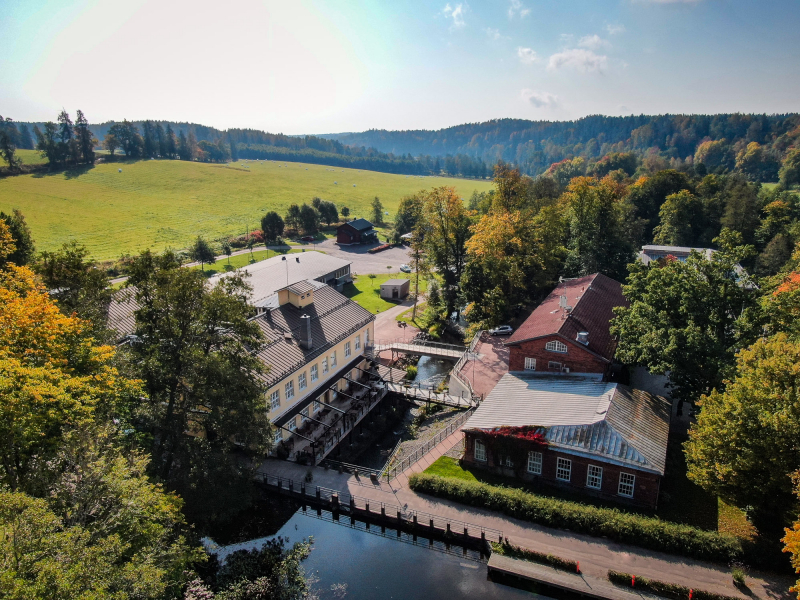
Photo: fiskarsvillage 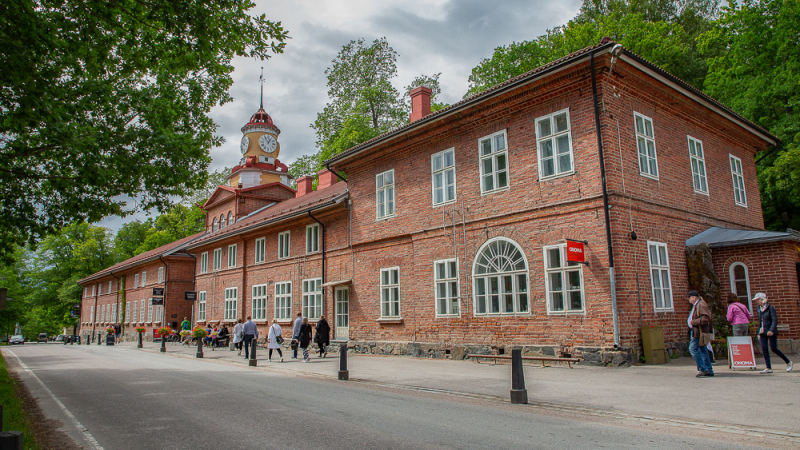
Photo: discoveringfinland -
St. Anna's Church of Kokar, erected in 1784 and famed for its 14th-century Finnish Franciscan monastery, is a charming whitewashed stone church in Aland. The convent's remnants may still be seen today, and tourists can see where the monks who formerly lived there worked. A 13th-century baptismal font may be found in Kokar's St. Anna's Church.
The Kokar St. Anna's Church is located near Hamno, Sweden, about 132 miles south of Stockholm. The town is located in Aland, Finland's autonomous, demilitarized, Swedish-speaking zone.
The current stone church was erected on top of the remnants of a medieval monastery church that appears to be shaped like a regular land parish church and dates from the 14th century.
The church was built in 1784 and is dedicated to Jesus' grandmother, Anna. The church's interior and exterior appearance have remained largely unchanged over the past two centuries. The sacristy, which was erected in 1876, and the organ loft, which was inaugurated in 1912, are the only additions. In 1992, the old organ was replaced, and it is now on display at the Kokar Museum.
Visitors to the church now can enjoy looking at the many interesting objects that the church has accumulated over the years.Location: Åland, Finland
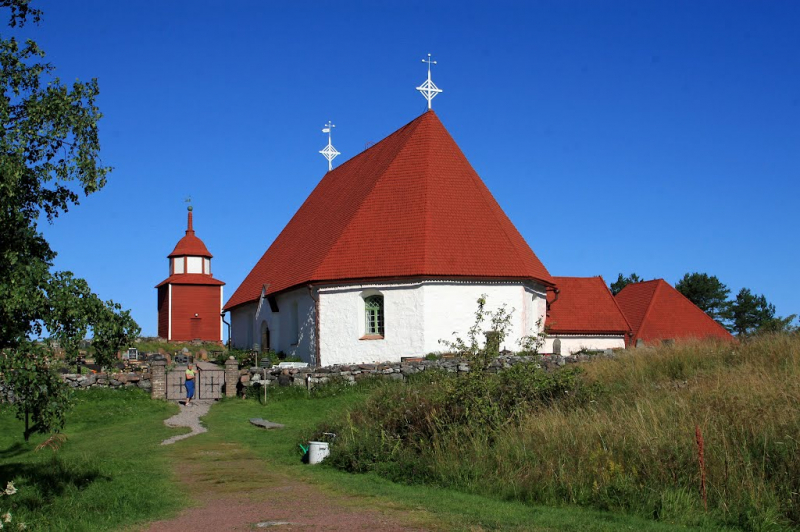
Photo: mapio 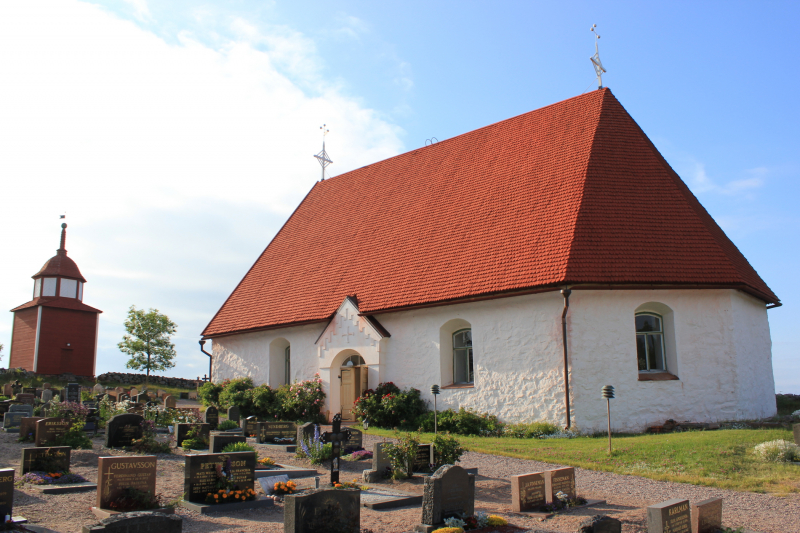
Photo: wikipedia -
Porvoo Cathedral (Porvoon Tuomiokirkko) is a Gothic-style church built in the 15th century that was converted to a cathedral in 1723. The seat of Borg, Finland's Swedish-speaking diocese, is an Evangelical Lutheran Church. The cathedral is dedicated to Mary, the mother of Jesus, and is located in Porvoo, Finland's southernmost city.
Porvoo Cathedral's earliest iteration began in the 13th century, and while some original remains, its current appearance comes largely from 1414-1418, when it was restored.
The earliest stone walls were built between 1410 and 1420, and it was initially composed of wood. The church was expanded to the east and south around 1450.
The pulpit was built in 1764, and the inside is ornamented with end-of-the-fifteenth-century wall paintings. The separate belfry's oldest portions come from medieval times, and its current appearance dates from the 18th century.
Porvoo Cathedral has been damaged several times over the ages, mostly owing to fire: in 1508 by Danish forces, and in 1571, 1590, and 1708 by Russian forces. The outside roof collapsed in 2006 due to an arson attempt, however the inner ceiling and cathedral interior remained intact.
Porvoo Cathedral played a significant part in Finland's history as the site of the country's first Diet, in which the country was confirmed as an autonomous Grand Duchy, in 1809.
Porvoo's ancient and gothic exterior, as well as the interiors, which are filled with paintings from the end of the 15th century, are open to visitors today. There is also a massive vintage organ, which is periodically used to play evocative music. Though the church isn't lavishly decorated, its simplicity and solitude make it a favorite spot for travelers and residents alike to ponder or worship.
Location: Porvoo, Finland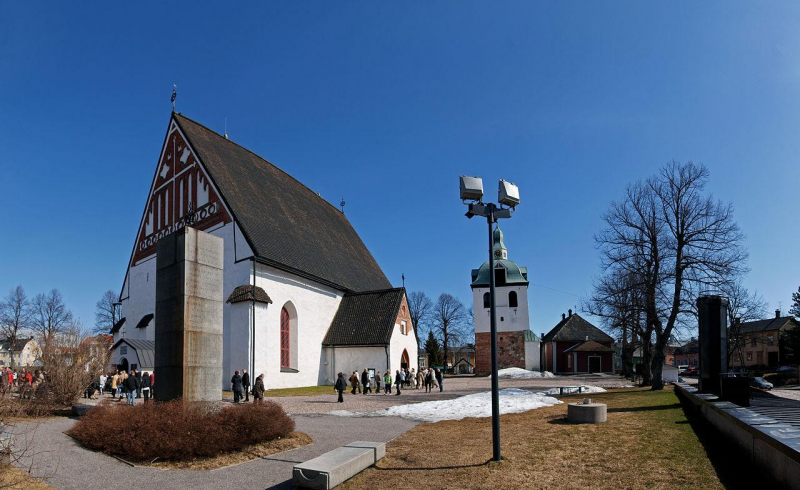
Photo: religiana 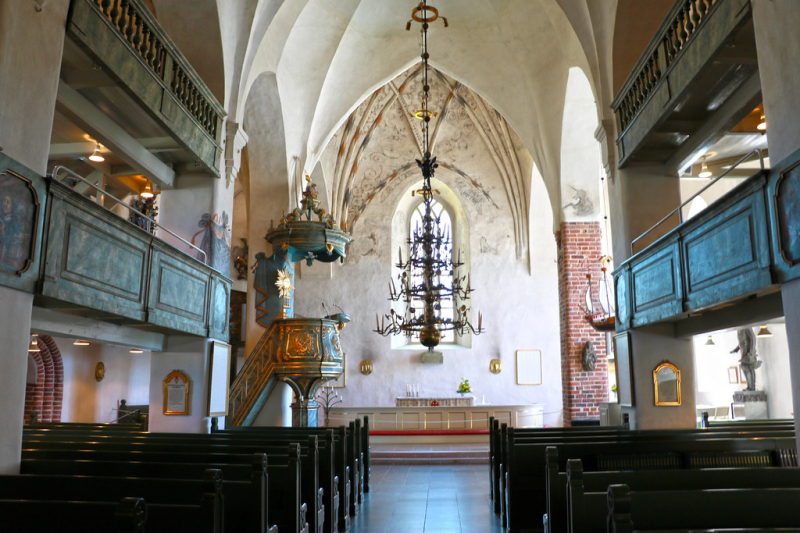
Photo: flickr












